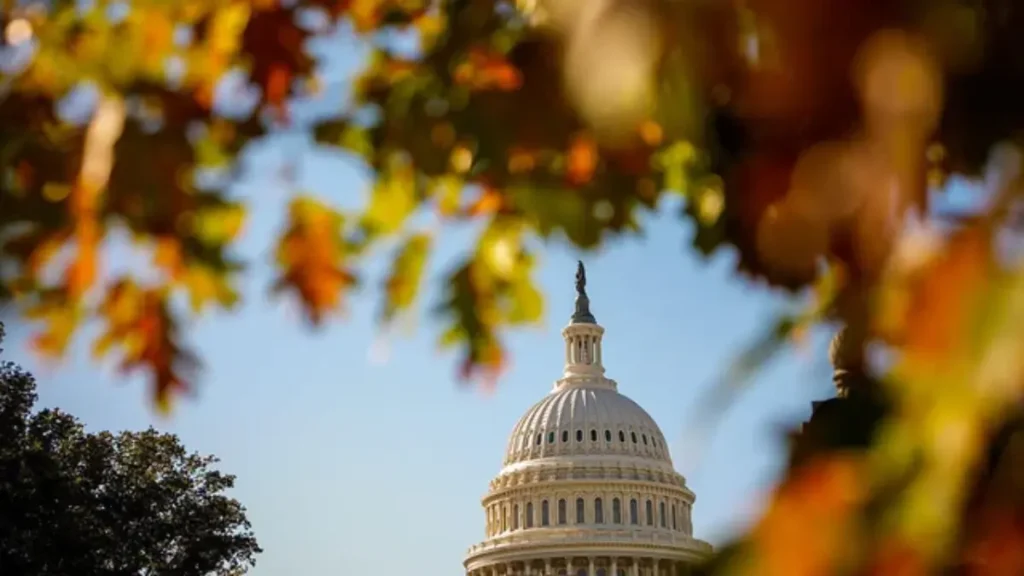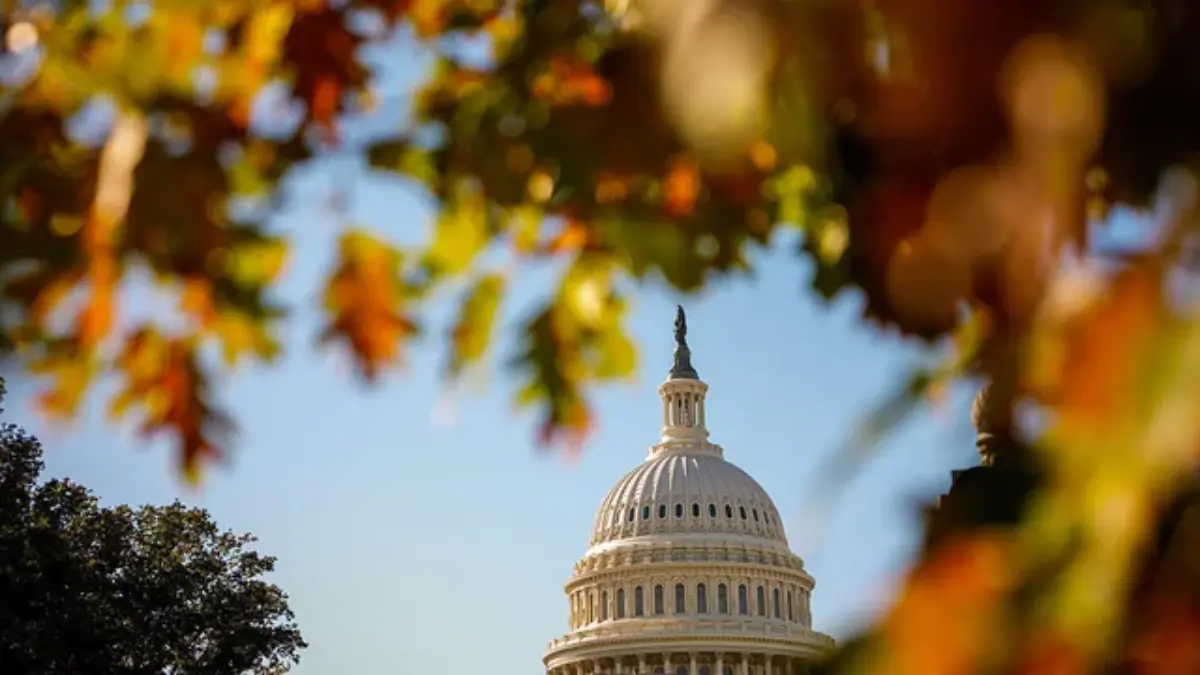The government shutdown continues as the Senate fails to advance a GOP funding bill after a 22-hour speech by Sen. Jeff Merkley. Learn about the political standoff, economic impact, and historical comparisons behind the 2025 shutdown crisis.
Government Shutdown Continues: Inside Day 23 of America’s Political Standoff

The government shutdown continues into its 23rd day, marking one of the longest funding lapses in U.S. history. On Wednesday, the Senate failed for the 12th time to move forward with the House-passed GOP bill designed to reopen the government. The stalemate, intensified by a 22-hour and 37-minute speech from Democratic Senator Jeff Merkley of Oregon, has left millions of federal workers unpaid and Americans frustrated by the ongoing political deadlock.
The Senate Vote: Another Failed Attempt at Resolution
On October 22, 2025, the Senate voted 54-46, falling short of the 60 votes required to advance the Republican-sponsored funding measure. Three Democrats crossed the aisle to support the bill, while most of their colleagues stood firm in opposition, arguing the proposal failed to address key policy priorities.
Sen. Jeff Merkley took the Senate floor Tuesday evening in a marathon protest speech that lasted nearly an entire day. He accused President Donald Trump and Republican leaders of “governing by intimidation,” describing their stance as “a threat to democracy.”
As the government shutdown continues, both chambers remain at an impasse, with no bipartisan agreement in sight.
Timeline of the 2025 Government Shutdown
| Date | Event | Key Outcome |
|---|---|---|
| Oct 1, 2025 | Federal funding expires at midnight | Start of the government shutdown |
| Oct 5, 2025 | Initial Senate vote fails | Early signs of political stalemate |
| Oct 15, 2025 | Federal workers miss second paycheck | Economic stress begins |
| Oct 22, 2025 | Sen. Jeff Merkley delivers 22-hour speech | Protest against GOP funding bill |
| Oct 23, 2025 | Senate fails 12th vote, 54-46 | Shutdown enters 23rd day |
This table highlights the sequence of failed legislative actions that have kept the government shutdown continuing for over three weeks.
Historical Context: Comparing the 2025 Shutdown to 2018-2019
At 23 days and counting, the 2025 government shutdown is now the second-longest in U.S. history, trailing only the 35-day shutdown of 2018-2019. That earlier lapse occurred during Trump’s first term, largely over border wall funding disputes.
| Shutdown Period | Duration | Primary Cause |
|---|---|---|
| 2018–2019 | 35 days | Border wall funding dispute |
| 2025 | 23+ days | Budget and spending disagreements |
| 2013 | 16 days | Affordable Care Act funding |
| 1995–1996 | 21 days | Federal budget disagreements |
Both shutdowns share a common theme: partisan gridlock. Analysts suggest that as the government shutdown continues, it reflects deeper political polarization in Washington, making bipartisan cooperation increasingly rare.
Economic Impact: Federal Workers and Public Services Hit Hard
The government shutdown continues to inflict financial pain on federal employees, contractors, and everyday Americans. Roughly 800,000 federal workers remain either furloughed or working without pay.
Key Economic Effects:
- Federal workers unpaid: Thousands have missed paychecks, causing financial insecurity.
- Public services halted: National parks, IRS support, and visa processing slowed or stopped.
- Contractors affected: Private companies tied to government projects face losses.
- GDP slowdown: Economists warn that prolonged shutdowns shave off up to 0.2% of quarterly GDP per week.
This ongoing crisis has ripple effects across sectors—from aviation safety to food inspections—demonstrating how dependent the nation is on steady federal operations.
Jeff Merkley’s 22-Hour Speech: A Symbol of Protest
Senator Jeff Merkley’s 22-hour and 37-minute speech has drawn national attention. His filibuster-style address, which spanned from Tuesday night into Wednesday evening, denounced what he called “President Trump’s authoritarian tendencies” and demanded negotiations centered on “the people, not political power.”
Merkley’s move is now one of the longest speeches in modern Senate history, reminiscent of past marathon efforts by lawmakers during moments of deep national division. While his protest didn’t stop the bill’s failure, it underscored the passion—and frustration—surrounding this political showdown.
As the government shutdown continues, Merkley’s speech may serve as a rallying cry for Democrats demanding a broader budget compromise.
Political Divide: GOP vs. Democrats on the Path Forward
The core issue remains how to fund key federal programs without compromising each party’s principles.
- Republicans, led by House Speaker Mike Johnson, are pushing for spending limits, immigration reforms, and reduced social program funding.
- Democrats want a “clean” funding bill that maintains government services without partisan policy add-ons.
President Trump has urged Republicans to “stand firm,” framing the shutdown as a test of “strength and leadership.” Democrats, meanwhile, accuse the GOP of “holding the government hostage.”
This partisan standoff is the main reason the government shutdown continues, with neither side willing to concede.
Public Reaction and Social Impact
Public frustration has been mounting as the government shutdown continues. Social media platforms are filled with hashtags like #EndTheShutdown, #MerkleySpeech, and #ShutdownDay23, reflecting growing pressure on lawmakers.
Surveys show that 61% of Americans blame Congress as a whole, while 29% specifically fault the White House for the standoff.
Public confidence in both parties has dipped, raising concerns about long-term faith in federal governance.
Possible Outcomes: What Comes Next?
As the government shutdown continues, several potential outcomes are on the table:
| Scenario | Likelihood | Impact |
|---|---|---|
| Short-term continuing resolution (CR) | Moderate | Reopens government temporarily |
| Bipartisan compromise on spending | Low | Requires cross-party cooperation |
| Executive intervention | Low | Risk of legal challenges |
| Prolonged shutdown (30+ days) | High | Economic and political damage intensifies |
The most likely near-term outcome is a temporary continuing resolution to restore funding for a few weeks while deeper negotiations continue.
Expert Analysis: A Crisis of Governance
Political analysts argue that this shutdown symbolizes a larger governance crisis. The U.S. has now experienced four major shutdowns in 30 years, each longer and more bitter than the last.
Dr. Elise Warren, a political scientist at Georgetown University, notes:
“The fact that the government shutdown continues without a clear end reflects systemic dysfunction. Both parties are prioritizing political optics over practical governance.”
Her assessment highlights what many see as a broken political culture—where scoring points outweighs solving problems.
FAQs on the Government Shutdown
Q1. Why did the 2025 government shutdown start?
The shutdown began after Congress failed to pass a funding bill by October 1, 2025, due to disputes over spending priorities and policy riders.
Q2. How long has the government been shut down?
As of October 23, 2025, the government shutdown continues for its 23rd day, making it the second-longest in history.
Q3. Who is affected by the shutdown?
Federal employees, contractors, and U.S. citizens relying on government services such as passport processing, national parks, and tax assistance.
Q4. Can the President end the shutdown alone?
No. A funding bill must pass both chambers of Congress and be signed by the President.
Q5. What happens if the shutdown extends beyond 30 days?
Prolonged shutdowns can reduce GDP growth, disrupt federal loan programs, and harm America’s global credit credibility.
Conclusion: A Nation Waiting for Compromise
As the government shutdown continues, America stands at a crossroads. The stalemate in the Senate—marked by Jeff Merkley’s 22-hour protest speech and repeated failed votes—illustrates the deep ideological divide shaping U.S. politics.
The economic toll grows daily, federal workers remain in limbo, and public patience is wearing thin. Whether resolution comes through compromise, temporary funding, or political pressure, one fact remains clear: the government shutdown continues, testing the resilience of American democracy itself.

